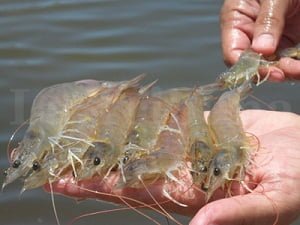Authors
Benjamin Whittaker
Postdoctoral Fellow, Department of Integrative Biology, University of Guelph
Elizabeth Boulding
Professor, Integrative Biology, University of Guelph
Biologists study the social behaviour of fish through their communication, which includes grunts, clicks and coordinated flatulence. Cleaner fish feed on the parasites that live on the skin of many different species of fish, known as clients.
Some species of tropical cleaner fish are skilled communicators and display elaborate dances. New research focusing on the social behaviour of cold-water cleaner fish aims to help salmon farmers control parasitic sea-lice in aquaculture.
Dancing tropical fish
Diving among the coral reefs of the Indo-Pacific — the geographic region comprising the Indian Ocean and the west Pacific Ocean — you might see a bluestreak cleaner wrasse, which is a highly intelligent species and perhaps the first fish to show self-awareness. This wrasse relies on cleaning parasites from clients to find the majority of its diet.
Attracting new clients and getting them to cooperate while removing parasites can be a difficult task. To make the job easier, bluestreak cleaner wrasse perform a complex dance and massage clients with their fins. This display relaxes the client, allowing the cleaner to approach and closely inspect its skin for parasites.
Stay Always Informed
Join our communities to instantly receive the most important news, reports, and analysis from the aquaculture industry.
This is an example of mutualism because both parties benefit from interaction: the cleaner gets a meal and the client is rid of parasites. For decades, biologists have studied the behaviour of bluestreak cleaner wrasse to research mutualism, however, there are many other species of cleaner fish which are yet to be studied.
Cold-water communication
Investigating whether cold-water cleaner fish communicate with clients is particularly important for the salmon aquaculture business. Sea-lice are a huge economic, ecological and ethical problem for salmon farmers, and controlling louse populations is a big challenge.
Stocking cold-water cleaner fish in sea-farms may help reduce parasite numbers on the salmon. However it is unknown whether cold-water cleaner fish dance for their clients, or whether these species can communicate at all, which would affect how good they are at removing sea-lice from salmon.
To investigate this potential, our research team at the University of Guelph looked at how cunner wrasse communicated with salmon.
Strike a pose
Along with Sumika Maeda, we filmed cunner wrasse, a native cleaner fish from eastern Canada, swimming inside aquariums with salmon to see how the two species interact. At first, we were disappointed not to see any underwater dancing, but then a particularly large cunner swam out in front of the salmon and made an unusual pose.
The cunner pointed down towards the floor, spread its fins open wide, and hung suspended in the water for a few brief moments before swimming away. Several minutes later it returned to strike another pose, this time for longer, and moving slowly around the salmon.
Our video analysis showed that cunners posed more frequently towards salmon that had sea-lice on their skin, compared to salmon free of parasites. Cunners that posed more frequently would get closer to salmon, and also spend longer time periods visually inspecting the salmon.
These results imply that cunner wrasse pose towards salmon as a form of communication, which helps the cunner gain access to lice on the salmon’s skin.
Poser for mutualism
Cunner wrasse didn’t perform the complex ballet of their tropical counterpart, however, they displayed a series of highly exaggerated poses that was reminiscent of the voguing trend of the late 1980s.
This simpler dance style might reflect the fact that cunners can find alternate food sources, and don’t rely on eating parasites as much as bluestreak cleaner wrasse. Studying more diverse species of cleaner fish might give more insight on the biology of mutualism and fish communication.
It’s important to note than not every cunner showed posing behaviour and some individuals would hide from salmon, whereas others embraced the spotlight. Measuring differences in posing behaviours could help farmers choose the best cleaners to use for sea-lice control. It could also help identify factors that influence communication between cunner wrasse and salmon, like genetics and environment.
Source: The Conversation
Editor at the digital magazine AquaHoy. He holds a degree in Aquaculture Biology from the National University of Santa (UNS) and a Master’s degree in Science and Innovation Management from the Polytechnic University of Valencia, with postgraduate diplomas in Business Innovation and Innovation Management. He possesses extensive experience in the aquaculture and fisheries sector, having led the Fisheries Innovation Unit of the National Program for Innovation in Fisheries and Aquaculture (PNIPA). He has served as a senior consultant in technology watch, an innovation project formulator and advisor, and a lecturer at UNS. He is a member of the Peruvian College of Biologists and was recognized by the World Aquaculture Society (WAS) in 2016 for his contribution to aquaculture.




